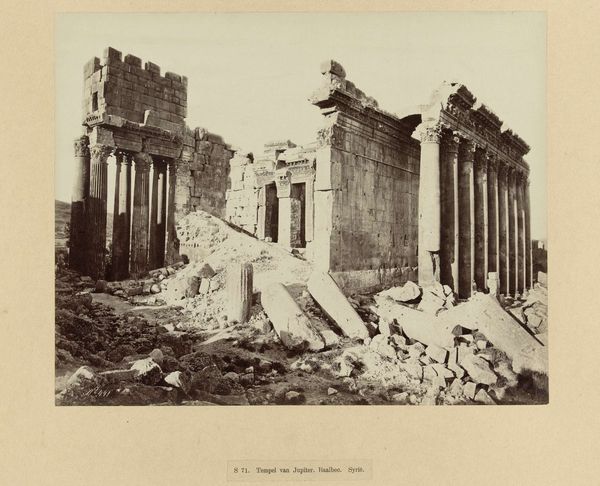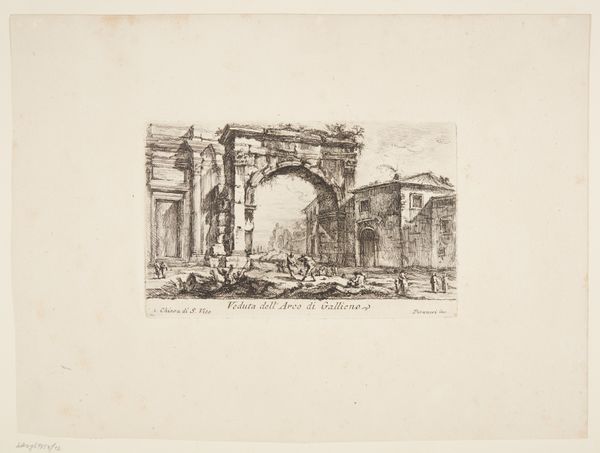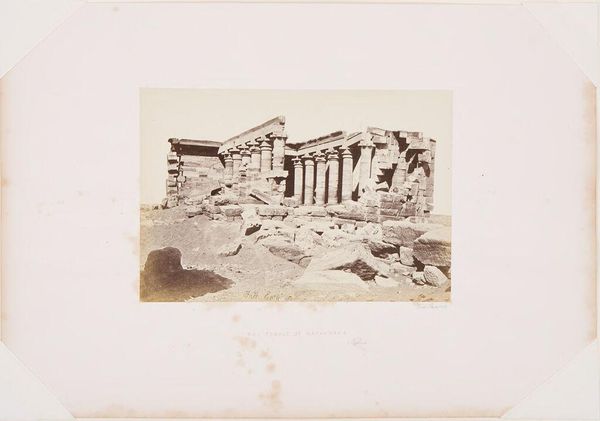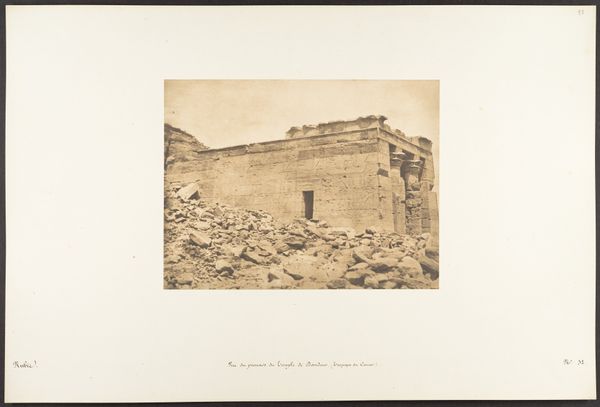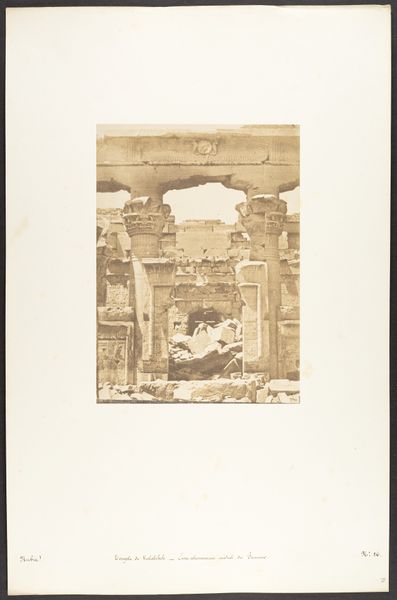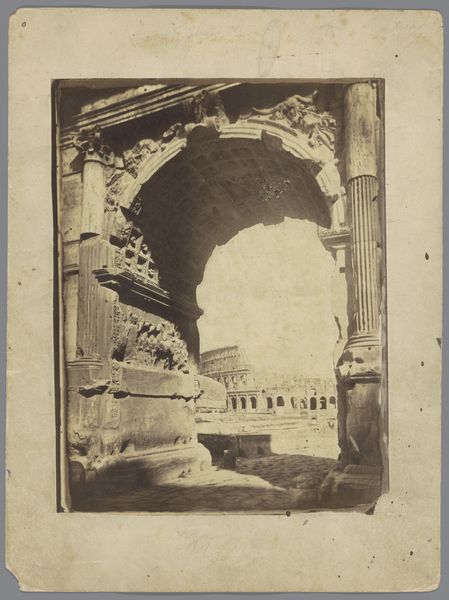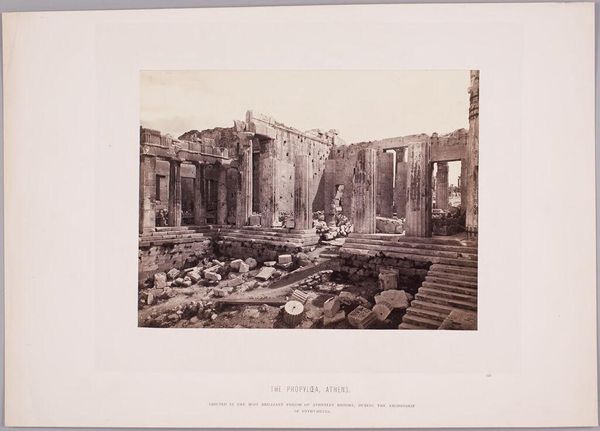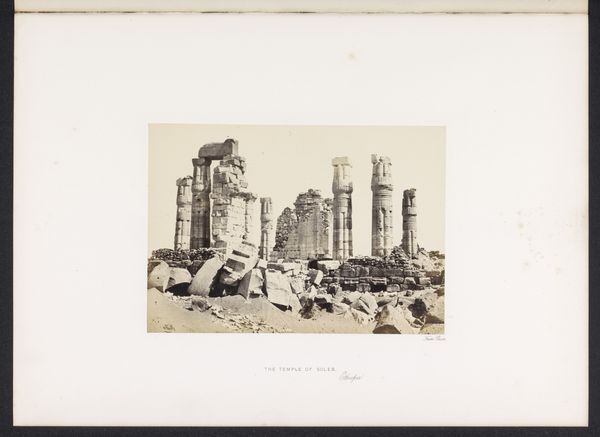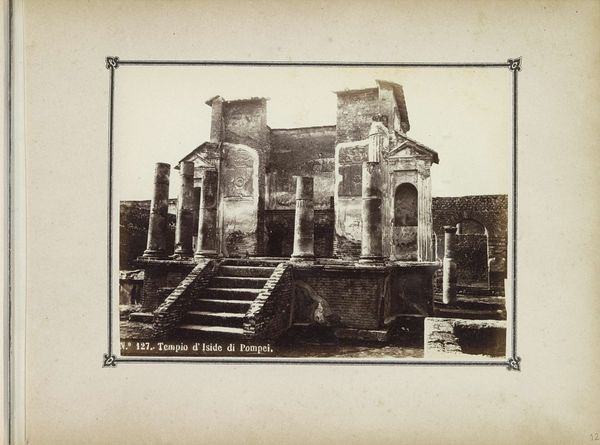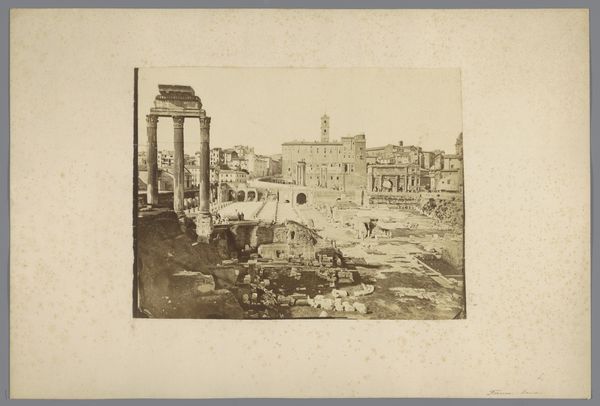
photography, albumen-print, architecture
#
landscape
#
photography
#
ancient-mediterranean
#
orientalism
#
albumen-print
#
architecture
Dimensions: Image: 6 7/16 × 8 3/8 in. (16.4 × 21.3 cm) Mount: 12 5/16 × 18 11/16 in. (31.2 × 47.5 cm)
Copyright: Public Domain
Curator: This is Maxime Du Camp's "Vue du Temple de Jupiter, à Baâlbek (Héliopolis)," taken around 1850. It's an albumen print, showing the ruins of the Temple of Jupiter. Editor: My first thought? "Wasted labor." Look at the sheer scale of these stones! It just screams monumental effort, followed by…dust. Curator: Indeed. Du Camp, travelling with Flaubert, captured a romantic desolation, didn't he? I can almost smell the sun-baked stone and the whispers of forgotten prayers clinging to those fallen columns. There's a tangible weight of history. Editor: Tangible, yes, literally. I am drawn to the material presence. All that stone had to be quarried, transported, shaped by human hands, fit into place according to some master plan that fell apart. Think about the armies of workers, the organization required, the tools they would have used to move it! This image, although showing its collapse, reveals as much about material construction as it does about spiritual ideas or some orientalist fantasy. Curator: Fair point. Du Camp presents the aesthetics, but he inevitably reveals the brutal human endeavor required for their original conception, too. It is the dance between those colossal stones, as if they are in conversation across the epochs. What strikes me most is the silence that emanates from the picture now. I wonder who might find reverence amongst these silent remains. Editor: And where did this material all come from? And what did the workforce receive? Were these enslaved peoples building the stones? In other words, looking beyond the aesthetic moment, and understanding it was a production that possibly included many people’s forced labor…I mean, what *else* do you do with ancient sites besides repurpose them? Curator: Perhaps nothing. Perhaps Du Camp’s photo inadvertently reminds us that everything—even faith, even art—is constructed. From the earth, by human hands, towards a purpose. And destined, perhaps, to crumble back down into that same earth. Editor: Well said! It speaks of constant material transformation through human intentions that echo even in faded photographs of ancient stones.
Comments
No comments
Be the first to comment and join the conversation on the ultimate creative platform.
